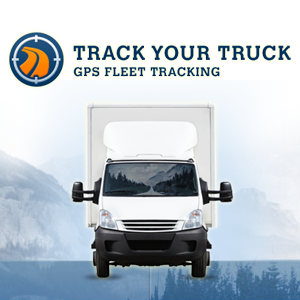Winter Truck Driving Tips
 As a trucker, how do you protect yourself during the winter months? From the polar vortex in the northern U.S. to the traffic gridlock in Atlanta and snow and ice in southern states such as Alabama, winter has been especially harsh for driving conditions this year. Here are some ideas to help you out.
As a trucker, how do you protect yourself during the winter months? From the polar vortex in the northern U.S. to the traffic gridlock in Atlanta and snow and ice in southern states such as Alabama, winter has been especially harsh for driving conditions this year. Here are some ideas to help you out.
Carry Supplies
No one should ever expect that they will end up stuck, spun out or wrecked. The problem is, it happens. And it happens to the best and most experienced drivers. Don’t be too proud to carry extra supplies.
Always prepare for the worst; keep the necessities in case of an emergency. Extra blankets, water, canned food and a can opener are a good place to start, as these are useful even if you’re just sitting in backed up traffic. You could also throw in flashlights, flares, triangle reflector kits and warning lights if you are involved in an accident.
Treat your Diesel
When it gets really cold, your diesel fuel runs the risk of gelling. If your diesel gels, your truck won’t run. Stock up on anti-gel additives at a store like Wal-Mart before you head out, rather than trusting truck stops to have it on shelves. When the weather outlook is bad, everyone will be buying anti-gel additives from truck stops, and they’ll probably run out.
Watch for the Warning Signs
You spend a lot of hours on the road, and you’ve probably experienced that sensation in which everything starts to look the same. Don’t become numb to the weather conditions. There are a lot of responsibilities to balance when you’re operating your big rig, but when winter rolls around, you should do your best to watch out for the warning signs of poor conditions.
Just because precipitation isn’t present doesn’t mean driving conditions are completely safe. Watch for ice on your windshield. Ice on the windshield means ice on the road.
These signs go beyond the obvious, things such as below-freezing temperatures and snow. Just because precipitation isn’t present doesn’t mean driving conditions are completely safe. Watch for ice on your windshield. Ice on the windshield means ice on the road. You should also watch for spray coming up from other vehicles. The roads are probably wet or slushy, and you may not have noticed before you started driving. If there’s less spray coming up off other vehicles’ tires but the road simply looks wet, then the road is likely starting to freeze.
Relax
You’ve noticed the warning signs. The roads are freezing and you’re losing visibility. Don’t panic! Panic causes overreactions, and overreactions cause accidents. Simply breathe and stay calm when the weather goes south. You need to focus.
Be Careful
Assured clear distance is incredibly important in inclement weather, so leave plenty of room between your vehicle and the vehicle in front of you. When the roads are frozen or covered in snow and slush, hold on to the steering wheel firmly. Be smooth in your actions, and brake and accelerate lightly. Be especially wary of bridges, as cold air underneath a bridge causes it to freeze before other parts of the road.
If you do end up stranded, best to stay in your vehicle and utilize your emergency kit until conditions improve. If visibility is low, don’t stop where you are — someone will run in to you. Get off the road if you absolutely have to, but do so carefully. You’re more likely to get stuck in snow on an entrance ramp, so find a 24-hour hotel or gas station if you can.
When the weather is a threat, keep your eyes open and be vigilant. If you do find yourself in terrible conditions, relax and be careful. With these tips, you should be well prepared.
Author Bio:
Robert J. Hall is president of Track Your Truck, a leading provider of GPS truck tracking systems and software for small and midsized companies.








 Tired of searching for the perfect job? Needing a job with better pay? Let us do the work for you. Fill out our Pre-Qualifying form once, and instantly get matched to companies hiring near you.
Tired of searching for the perfect job? Needing a job with better pay? Let us do the work for you. Fill out our Pre-Qualifying form once, and instantly get matched to companies hiring near you. Truck Drivers Salary varies by driving experience and position held. A CDL Truck Drivers skillset, hauling expertise & endorsements possessed can influence the potential for higher pay. Pay as a CDL Company Driver will differ than that of an Owner Operator, or Team Driver. Currently a Truck Driver can expect to receive a Salary ranging between
Truck Drivers Salary varies by driving experience and position held. A CDL Truck Drivers skillset, hauling expertise & endorsements possessed can influence the potential for higher pay. Pay as a CDL Company Driver will differ than that of an Owner Operator, or Team Driver. Currently a Truck Driver can expect to receive a Salary ranging between